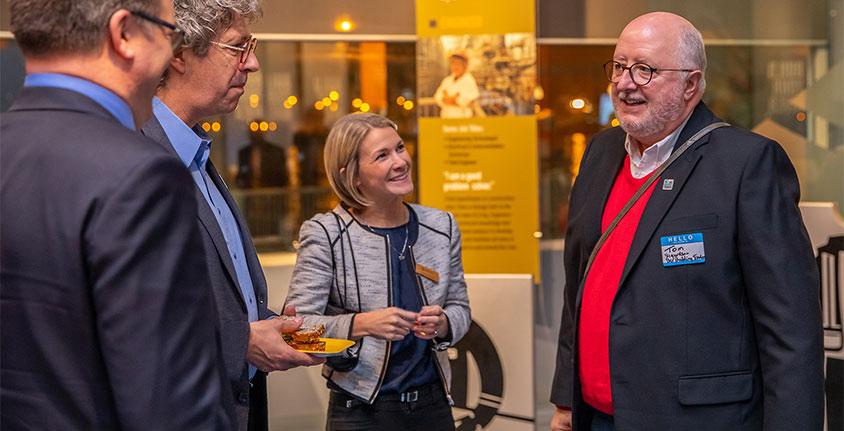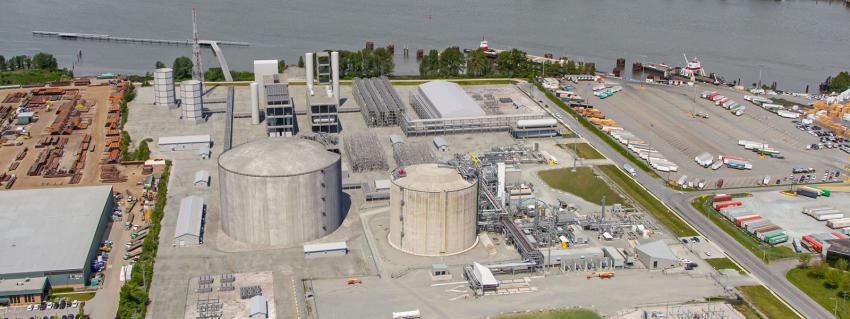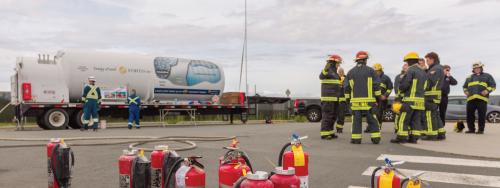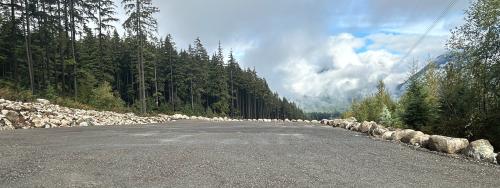What’s included in the expansion
The Tilbury Phase 2 LNG Expansion project would improve the resiliency of our gas system by increasing our capacity to store LNG. It would also increase our capacity to produce LNG for use as a marine fuel. The project may include:
- a new tank of up to 162,000 cubic metres that could triple the site’s current storage capacity as part of the Tilbury LNG Storage Expansion project.
- new liquefaction capacity of up to 3.5 million tonnes per year to produce LNG for customers interested in switching to LNG to displace fossil fuels such as marine bunker fuel, diesel and coal
The International Maritime Organization’s new lower emissions standards are compelling ship owners to consider cleaner alternatives to traditional fuel oil. The LNG produced at Tilbury could help fill that need—it’s some of the lowest-carbon LNG in the world.
About LNG
What is LNG? LNG is made from the same natural gas we use in our homes every day. It’s produced by cooling natural gas to -162 C to make it easier to store and transport.
LNG is stored and transported at low pressure inside a double-walled steel tank. It can’t burn inside the tank because there is no oxygen to react with. In the unlikely event of a spill or leak, once LNG is exposed to air, it will warm up, turn back into a gas, rise and dissipate quickly – leaving no residue. If spilled on water, LNG won’t mix and will vaporize quickly.
Compared to other marine fuels, LNG from Tilbury can lower GHG emissions by up to 27 per cent, nitrogen oxides by up to 95 per cent, particulate matter by up to 99 per cent and sulphur oxide emissions to almost zero, according to a 2019 study by thinkstep.
The Tilbury facility has been operating safely since 1971. Its stellar safety record is due, in part, to the members of our dedicated team and their commitment to their work.
Community engagement is vital to the project
We’ve submitted an Initial Project Description for the Tilbury Phase 2 LNG Expansion Project to the Impact Assessment Agency of Canada (IAAC) and the BC Environmental Assessment Office (EAO) as part of the first phase of the environmental/impact assessment process.
This first phase is also known as the Early Engagement phase, and gives the public, Indigenous groups and other stakeholders an opportunity to learn more about the project and provide feedback. This will include virtual open houses scheduled on June 18 and June 23, 2020.
The public can also get involved in the regulatory process by submitting a comment on either the EAO or IAAC websites.
Detailed descriptions of the regulatory process are available at Canada Impact Assessment and BC Environmental Assessment.
If the project is approved, construction is expected to start as early as 2022 and be complete by 2028.

FortisBC is committed to continuing engagement with the local community, Indigenous groups and other stakeholders about the proposed Tilbury expansion. The Early Engagement phase of the regulatory review process is an important time for us to better understand everyone’s interests and concerns.



